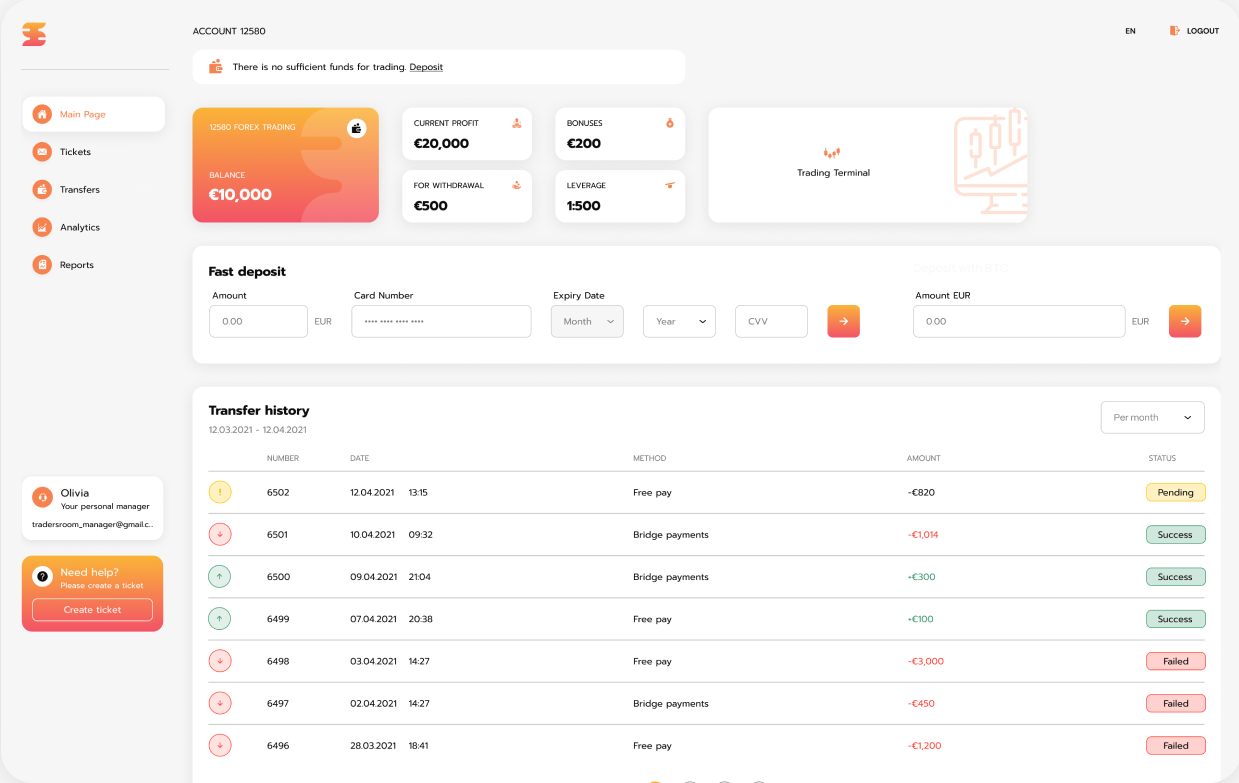
Trading
information
Elevate your trading finesse with carefully curated resources that fuel informed decisions and set you on the path to market domination.
F.A.Q
General questionsPersonal accountFinancial issuesExchange tradingCustomers
Ways to make a depositWithdrawal ProcessAccount verificationF.A.Q.Trading condition
CompanyHow to start trading?Financial instrumentsMinimum DepositFinancial designationsLoyalty program
VIP clubBonus account systemF.A.Q. BonusesReferral programF.A.Q
General questionsPersonal accountFinancial issuesExchange tradingEducation
Trading signalsAnalytical centerEducation for tradersProtection guideSecurity
CybersecurityAccount protectionSuspicious activityRisk managementSecurity
CybersecurityAccount protectionSuspicious activityRisk managementOur broker platform offers automated trading recommendations generated by traders through trading signals. These signals are the result of comprehensive market analysis and the use of technical indicators. Advanced algorithms monitor the markets, evaluate asset behavior, and identify potential trading opportunities. Traders can use these signals to pinpoint optimal entry and exit points based on the current market conditions. They can also set stop-loss and take-profit levels to manage their trades more effectively.
Using trading signals on our platform brings several benefits, such as saving time by eliminating the need for extensive market analysis and maintaining objectivity through reliance on quantitative data, thus reducing emotional trading decisions. All traders using our platform have free access to these signals.
However, it is crucial to remember that trading signals are not foolproof, and their accuracy is not guaranteed. While they offer valuable insights, they should be used alongside additional analysis and research. Traders should always be mindful of the inherent risks in trading and not rely solely on trading signals for their decisions.
Notable Technical Indicators for Market Analysis:
- Moving Average Crossover: Involves two moving averages with different periods, such as 50 and 200 days. A bullish signal occurs when the shorter period moving average crosses above the longer one, while a bearish signal occurs when it crosses below.
- Relative Strength Index (RSI): An oscillator that measures the speed and change of price movements. A bullish signal is noted when RSI crosses above 30, while a bearish signal is indicated when it crosses below 70.
- Bollinger Bands: Utilize two standard deviations above and below a simple moving average to form a channel. A breakout above the upper band signals bullish, while a breakout below the lower band signals bearish.
- Moving Average Convergence Divergence (MACD): A trend-following momentum indicator that shows the relationship between two moving averages. A bullish signal occurs when the MACD line crosses above the signal line, and a bearish signal occurs when it crosses below.
- Fibonacci Retracement: Horizontal lines that suggest potential support and resistance levels based on Fibonacci sequence. Approaching these levels may indicate potential trading signals.
- Ichimoku Cloud: Uses multiple lines to determine support and resistance levels, trend direction, and momentum. A bullish signal happens when the price crosses above the cloud, and a bearish signal when it crosses below.
- Volume: High trading volume can indicate significant buying or selling pressure. Rising prices on high volume suggest a bullish trend, whereas falling prices on high volume suggest a bearish trend.
Please note that our company is not responsible for any third-party software installed on your computer.







